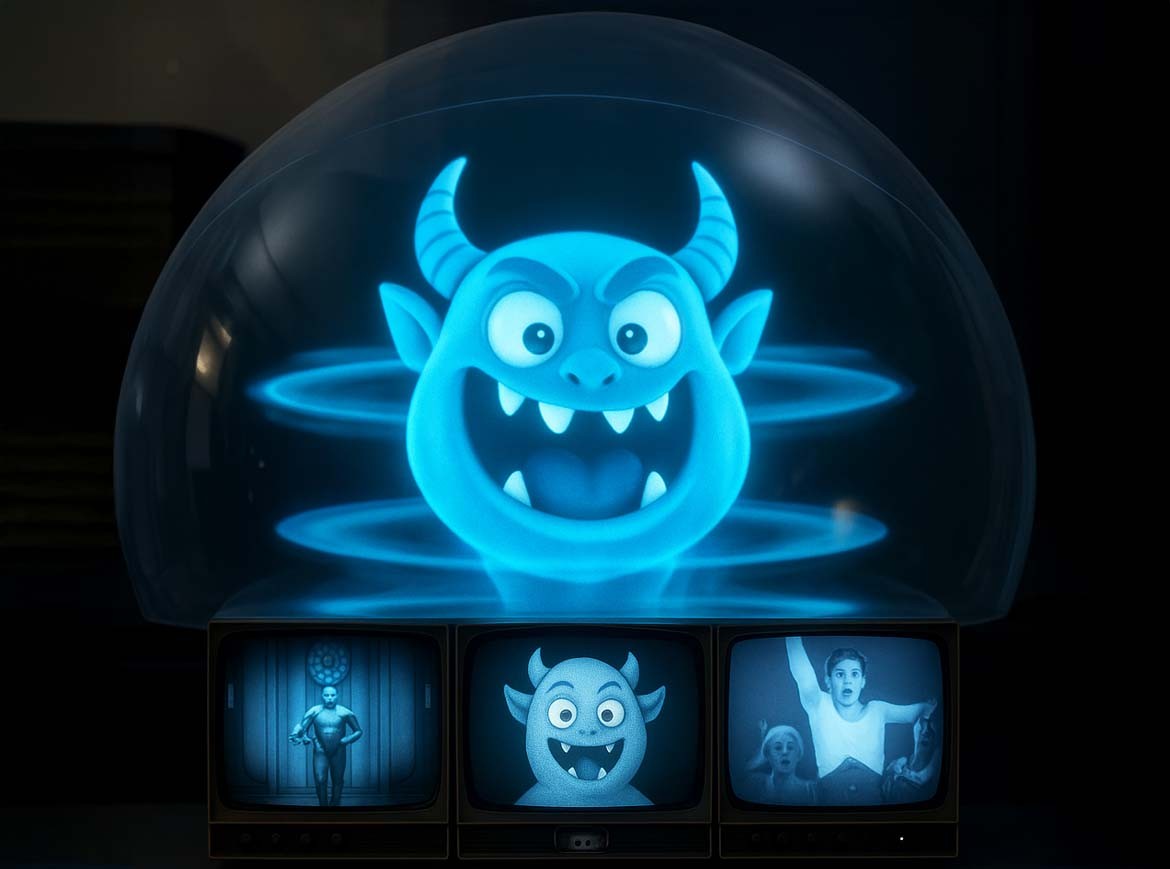“`html
Image: Real-time installation inspired by Fritz Lang’s “Metropolis” | Source: ellingson.tv / edited by Ulrich Buckenlei
What appears to be a hologram is in fact precise light guidance and real-time control. The installation by ellingson.tv reinterprets Fritz Lang’s “Metropolis” with electronic sound and visual precision – a combination of analog projection and digital system design. The result is a moment in which light itself becomes a carrier of space and emotion.
Optical Precision – When Light Becomes Matter
The floating figure seen inside a transparent dome is based on a classic principle of illusion art: the Pepper’s Ghost effect. An invisible projector sends the image onto an angled acrylic surface that reflects the light into the dome. The curvature of this surface refracts the beam, making the projected image appear to float in space – a digital phantom made of pure light.
Unlike computer-generated holograms, this effect is created entirely through analog means, yet with the precision of digital control. The entire movement of the light figure follows real-time data transmitted via MIDI signals to the projection controller. This allows the light illusion to respond instantly to music, frequency, and dynamics.
- Light projection on angled, transparent surfaces creates spatial depth
- Reflection and refraction form the impression of physical presence
- Optical engineering replaces expensive holographic technology
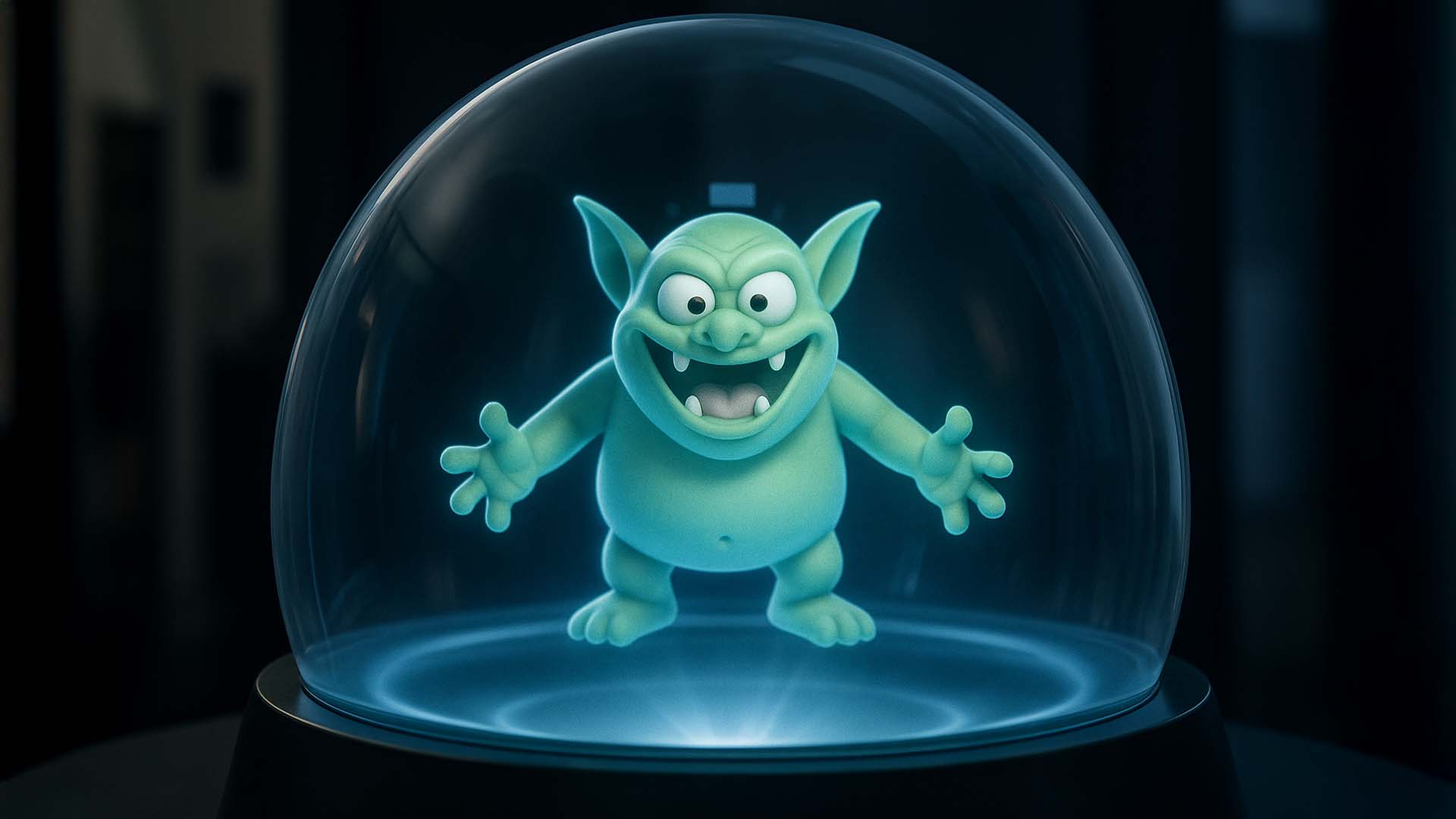
Image: Precise light refraction within the transparent dome creates real depth perception | Visualization: Visoric GmbH 2025
The principle shows that optical intelligence and physical clarity are often more powerful than digital complexity. The visible result is not merely an illusion but a form of spatial storytelling that remains physically tangible.
Analog Sources Digital Precision
In the foreground of the installation are three classic CRT monitors. Their flickering light becomes part of the overall composition. Instead of producing sterile perfection, the system uses the blur, afterglow, and color fluctuations of this analog technology to create depth and texture.
The space is thus defined not by artificial smoothness but by liveliness. The interplay of real light sources and digital control creates an atmosphere that feels emotionally tangible. The project demonstrates that precision and imperfection are not opposites – they together shape the aesthetics of the real.
- Analog light sources generate natural texture and depth
- Digital systems control rhythm and intensity
- Spatial impact emerges from imperfection and synchrony
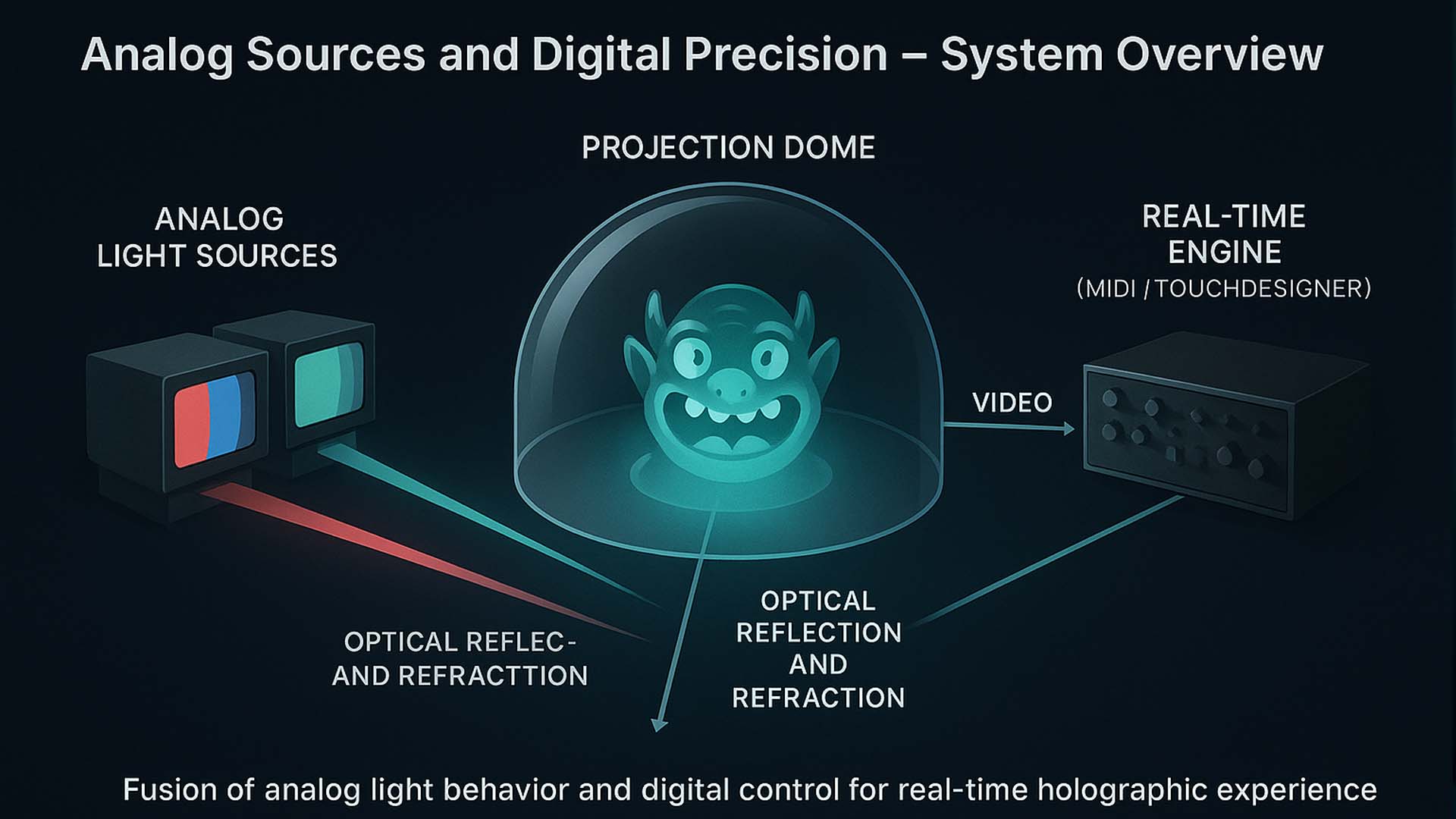
Image: Three analog monitors provide the light base for the optical illusion | Visualization: Visoric GmbH 2025
This demonstrates how old media technologies take on new roles in modern real-time systems. The space reacts to sound, motion, and frequency, while the physical devices ground the digital projection.
Real-Time Control and Audiovisual Synchrony
At the heart of the system lies real-time control via an Elektron Digitakt II, which uses MIDI signals to control a video platform such as VDMX or TouchDesigner. Each beat sends a signal that changes the visual output – color temperature, shape, light intensity. This creates an immediate link between sound and space.
The method is fully modular. The setup can be adapted, expanded, or supplemented with sensor data in real time. Human movement, temperature, or room acoustics can be made visually perceptible. This transforms an art installation into a functional system for events, brand environments, or industrial applications.
- MIDI and OSC protocols connect music and light in real time
- Systems respond to acoustic or sensor data
- Scalable from experimental setups to industrial environments
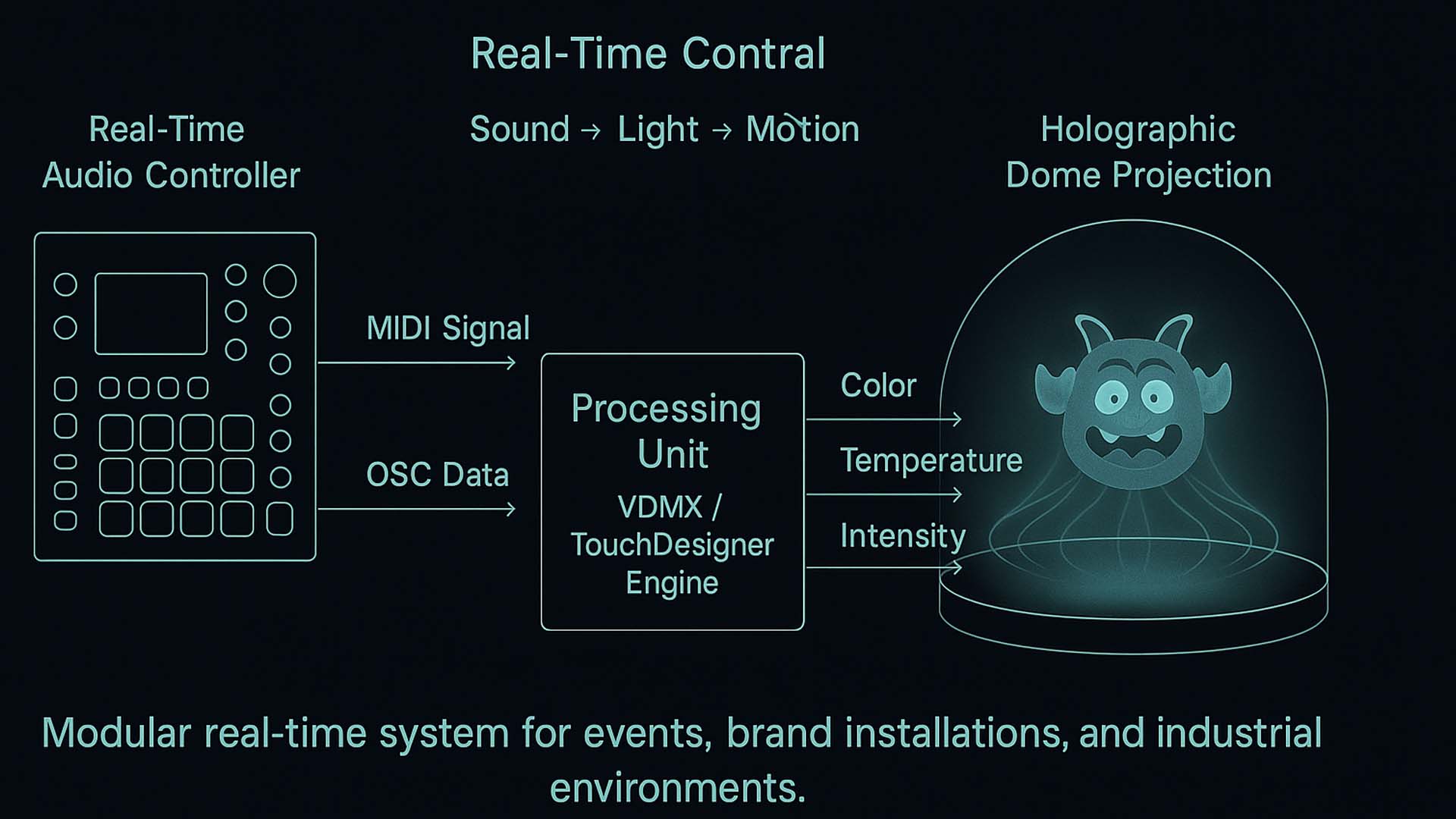
Image: Real-time linking of sound data and visual projection | Visualization: Visoric GmbH 2025
The system illustrates how engineering and creativity can form a shared language. Where technology usually dominates, a natural symbiosis of sound, light, and spatial perception emerges.
From Art to Application
The principles of this installation can be directly applied to brand spaces, exhibitions, and architectural projects. Instead of expensive holographic LEDs, real light surfaces, transparent structures, and controlled projections can be used. The result remains equally impressive – but more tangible, scalable, and sustainable.
A company can thus stage its technology, product development, or brand vision as a living, three-dimensional light sculpture. Movements, sounds, or data become part of a choreographed system that works both rationally and emotionally.
- Expandable to brand and architectural installations
- Combination of physical space and real-time data
- Emotional storytelling through optical reduction
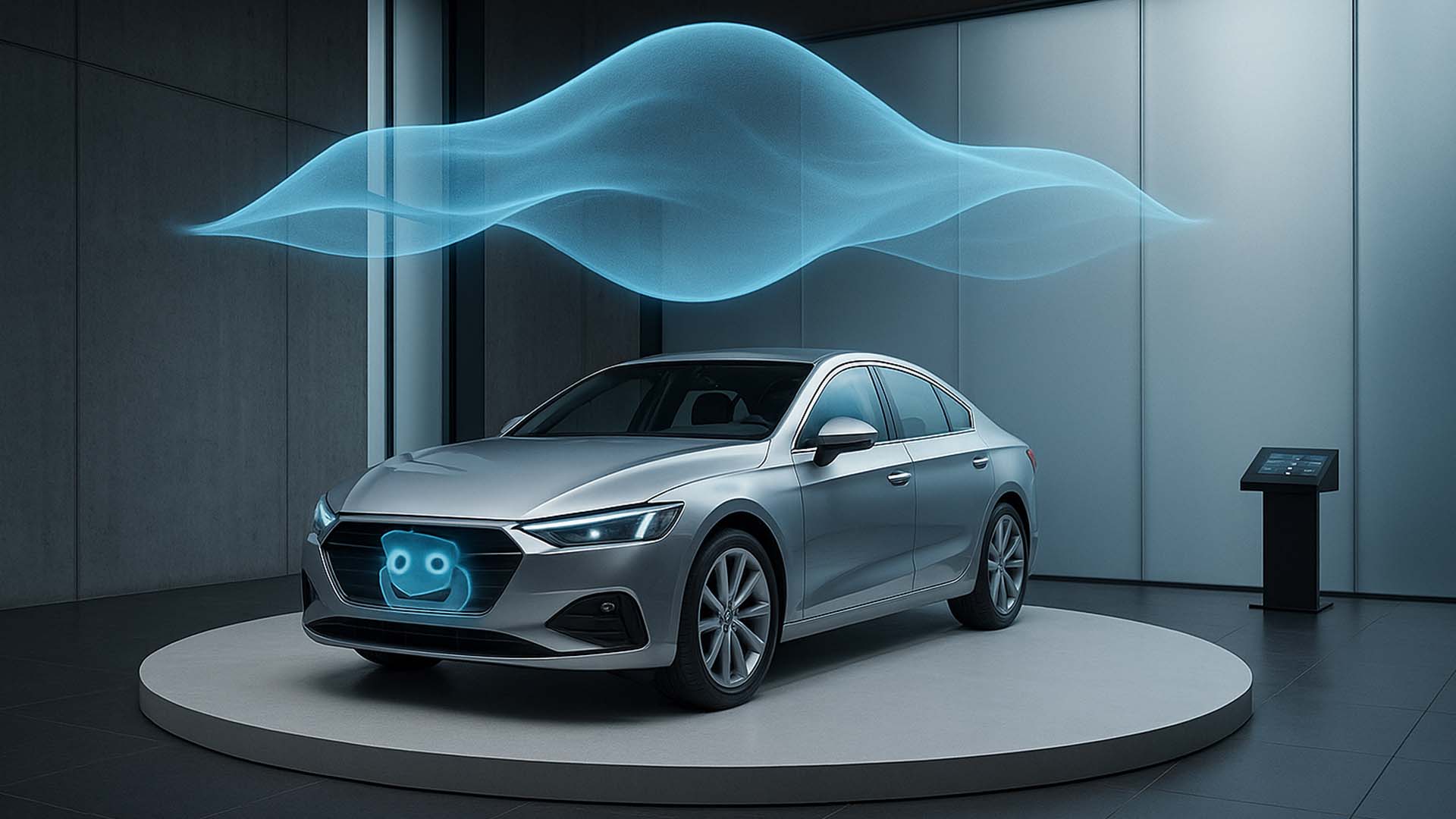
Image: Product presentation with holographic appearance using real light | Visualization: Visoric GmbH 2025
Such formats show that immersive communication doesn’t need to be digitally overdriven. The balance between visible mechanics and invisible intelligence creates an effect that feels both honest and contemporary.
Scientific Visualization
The first graphic shows the relationship between frequency and visual delay. Systems with direct real-time coupling achieve nearly synchronous perception of sound and light, resulting in stronger sensory coherence.
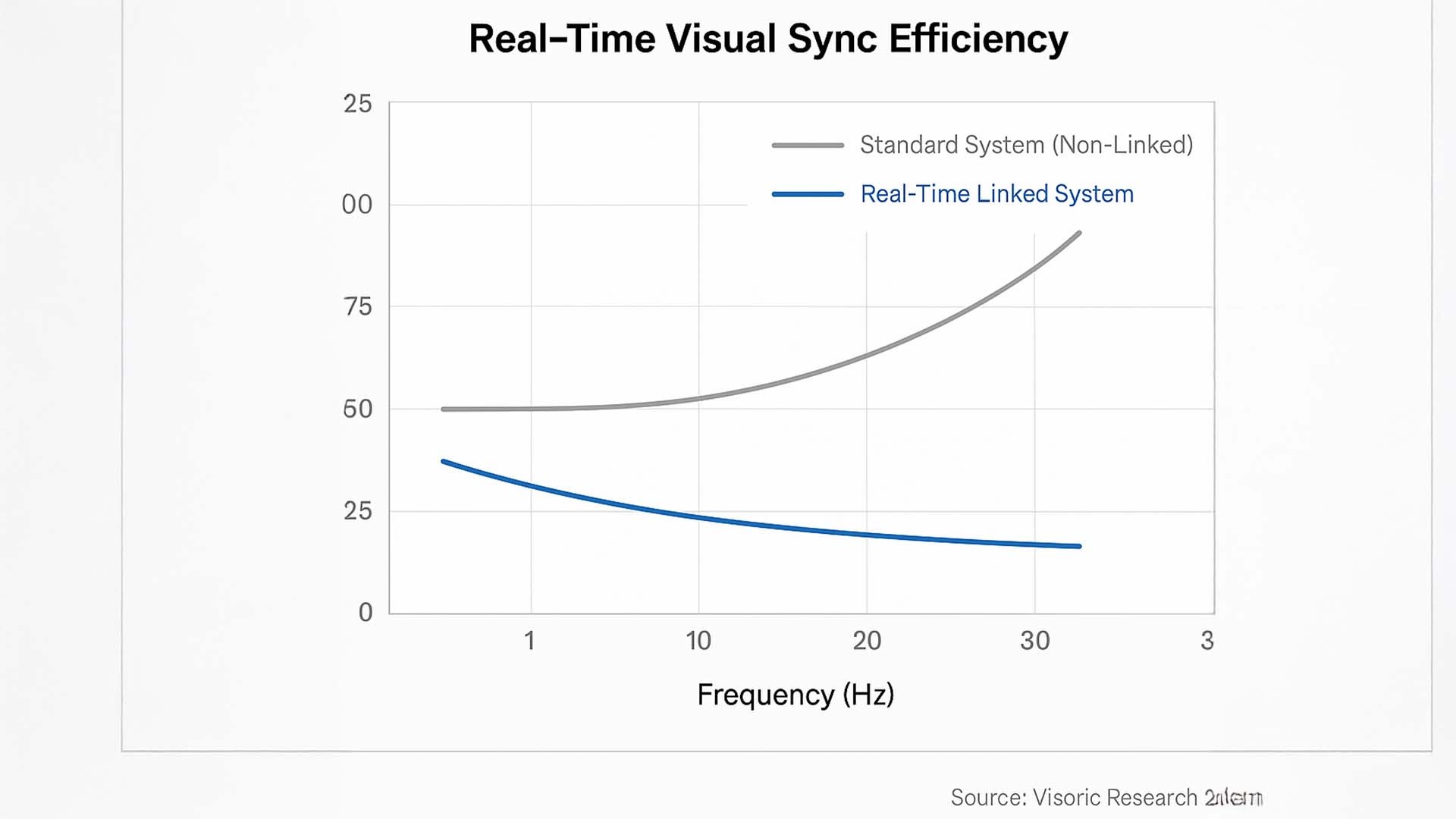
Diagram: Real-Time Visual Sync Efficiency (Frequency vs. Visual Delay) | Source: Visoric Research 2025
The second graphic explores the emotional impact of analog light presence compared to fully digital CGI projections. Physical light produces measurably higher recall values because reflection, shadow, and depth are real – suggesting that materiality enhances perception.
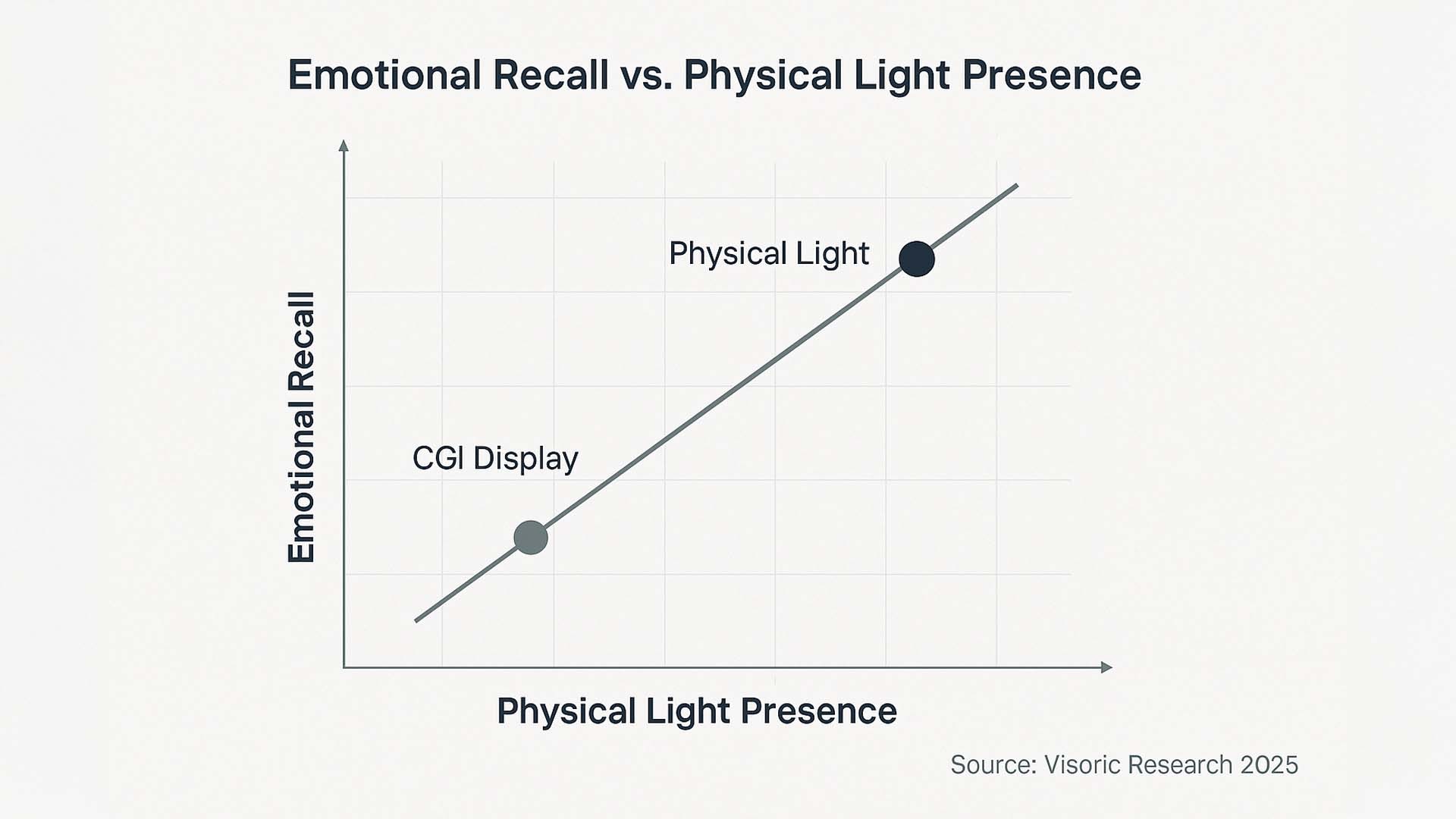
Diagram: Emotional Recall vs. Physical Light Presence | Source: Visoric Research 2025
Both diagrams emphasize that the fusion of real-time data, analog light, and spatial perception is more than an aesthetic experiment – it defines a new form of digital architecture.
Video – The Magic Within Space
The video demonstrates how light, sound, and space merge into a cohesive experience. Every movement in the sound triggers a change in the projection, every frequency modulates the form of the light figure. This creates an audiovisual loop that constantly renews itself – precise, poetic, and physically perceptible.
Insight: Real-time visualization and optical engineering in live performance | Source: ellingson.tv / Concept adaptation: Visoric GmbH 2025
The work shows that technology, at its best, disappears to reveal its impact. Light becomes the medium that makes thought visible – between art, science, and brand communication.
Get in Touch
Would you like to transform your ideas into immersive exhibits or interactive architecture? The Munich-based Visoric team supports you from concept and real-time design to on-site installation.
- Consulting and creative system development
- Real-time control with 3D, AR, and AI
- Design and operation of immersive spaces
Now is the right time to rethink light, space, and technology. The Visoric team looks forward to your vision.
Contact Persons:
Ulrich Buckenlei (Creative Director)
Mobile: +49 152 53532871
Email: ulrich.buckenlei@visoric.com
Nataliya Daniltseva (Project Manager)
Mobile: +49 176 72805705
Email: nataliya.daniltseva@visoric.com
Address:
VISORIC GmbH
Bayerstraße 13
D-80335 Munich
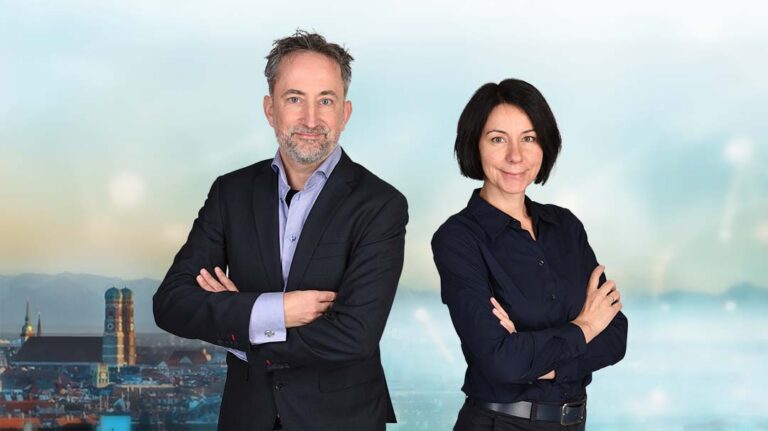
“`

